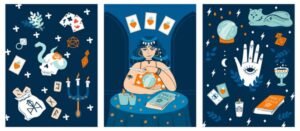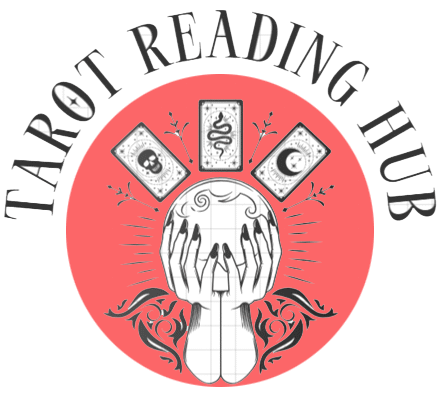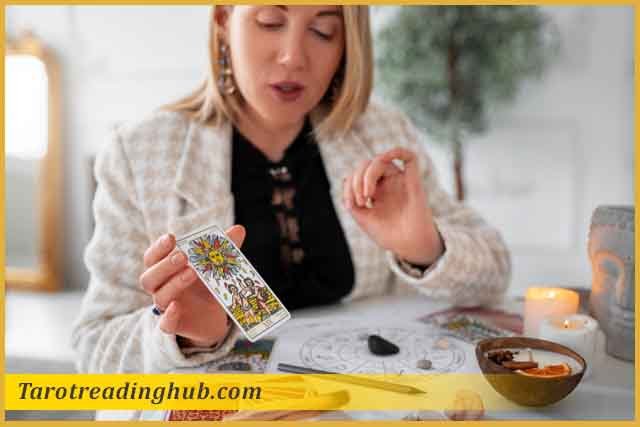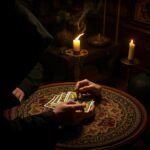Introduction to Tarot Reading
Tarot reading is a profound practice that has intrigued individuals for centuries, serving as both a tool for divination and a means of self-exploration. Historically, the origins of tarot can be traced back to the 15th century in Europe, where it began as a card game known as tarocchi. Over time, the cards evolved from simple entertainment to a revered method of insight and guidance, believed to hold the potential to unlock the mysteries of the future and illuminate one’s inner self.
The tarot deck is typically composed of 78 cards, divided into the Major Arcana and Minor Arcana. The Major Arcana consists of 22 cards that represent significant life events or spiritual lessons, while the Minor Arcana comprises 56 cards that delve into the day-to-day experiences of individuals. Each card is rich in symbolism, encompassing archetypal images, numbers, and elements that resonate with the user’s subconscious. This symbolism allows the tarot reading process to facilitate not only predictions about possible future outcomes but also insights into the reader’s emotions, motivations, and life circumstances.
In contemporary times, tarot reading has emerged as a popular method for self-reflection and decision-making. Many individuals turn to tarot cards not only to predict future events but also to gain clarity on various aspects of their lives, such as relationships, career paths, and personal development. By interpreting the cards, readers can identify patterns and opportunities that may not be apparent at first glance. Moreover, the reflective nature of tarot encourages users to explore their desires, fears, and the underlying factors influencing their choices, promoting a deeper understanding of themselves and their life journey.

Understanding Major Arcana
The Major Arcana consists of 22 distinctive cards that hold significant meaning within the tarot deck. Unlike the Minor Arcana, which comprises 56 cards divided into four suits, the Major Arcana represents pivotal life events, spiritual lessons, and deep psychological archetypes. Each card within the Major Arcana is numbered from 0 to 21, with the Fool typically assigned the number 0, symbolizing new beginnings and adventures.
Each Major Arcana card conveys a unique narrative and influence, often considered the cornerstone of tarot card readings. They signify major life themes such as transformation, fate, and personal growth. Cards like the Magician symbolize manifestation and resourcefulness, while the High Priestess embodies intuition and inner wisdom. The inclusion of these cards in a reading often indicates that the querent is facing or will soon encounter significant challenges or milestones that require deeper reflection and understanding.
Contrasting with the Minor Arcana, which focuses on day-to-day challenges and experiences, the Major Arcana delves into broader life themes. This distinction highlights the depth and complexity of readings that include Major Arcana cards. For instance, drawing cards such as the Lovers or the Wheel of Fortune can open discussions about relationships, choices, and the ebb and flow of fortune. These cards invite introspection and exploration, providing insights that can guide individuals in navigating their life’s journey.
Notably, some cards in the Major Arcana, such as Death and The Tower, evoke immediate emotional responses due to their associations with endings and upheaval. However, it is essential to interpret these cards contextually, as they can also herald new beginnings and opportunities for personal evolution. A thorough understanding of Major Arcana cards enhances the accuracy and depth of tarot readings, allowing practitioners to draw on the rich symbolism that these powerful cards encompass.
Weekly Tarot Horoscope Predictions
Creating weekly tarot horoscope predictions involves a straightforward yet insightful tarot spread that can provide valuable guidance for the coming days. A common method utilizes a three-card spread where each card focuses on different aspects: the past, present, and future. This approach allows individuals to reflect on previous experiences while considering their current situation and potential developments.
To begin, shuffle the tarot deck while concentrating on the upcoming week. After drawing the three cards, it is essential to interpret their meanings in the context of the querent’s life. For instance, the first card, representing the past, may highlight experiences that have influenced the querent’s present circumstances. This could reveal emotional baggage lingering from a past relationship or decisions affecting career choices.
The second card reflects the present moment and can shed light on current challenges or opportunities. This card’s significance may vary according to the querent’s situation. If it represents a card like The Lovers, the interpretation might focus on deepening relationships or making significant choices. On the other hand, a card such as The Tower may suggest the need for change and confronting unexpected situations.
The final card signifies the future and potential outcomes based on current paths and decisions. This offers foresight into how the querent’s actions may influence their life trajectory. For example, The Empress may indicate growth in personal creativity or nurturing relationships, while the Eight of Pentacles may hint at advancements in career through diligent effort.
By synthesizing these interpretations, tarot enthusiasts can develop a weekly horoscope that reveals insights into love, career, and personal growth, providing clarity and direction for the days ahead. Each week offers a chance to explore the symbolic meanings of the cards, fostering a deeper understanding of oneself.
The Lovers Tarot Card Meaning
The Lovers is a significant card within the tarot deck, encapsulating themes that extend beyond romantic partnerships. Primarily, this card symbolizes love, harmony, and choices that resonate in various aspects of life. It represents not just the connection between two individuals, but also the balance and union that can exist within oneself, signaling an important moment of decision-making and alignment.
When drawn, The Lovers card often indicates a time of deep emotional connections, particularly in romantic relationships. It highlights the beauty of love when it is experienced in its purest form, where there is mutual respect and affection. However, the card’s meaning transcends simple romance. It reminds individuals of the critical choices they face, urging them to consider how their decisions impact not just their relationships, but also their personal growth and values. This is essential as it emphasizes the importance of being true to oneself while navigating interpersonal dynamics.
Furthermore, the symbolism of The Lovers can also be seen in the context of harmony and collaboration. This card encourages individuals to seek balance in their interactions, be it with friends, family, or colleagues. The harmonious relationships depicted by this card reflect not solely love but also partnership in work and life pursuits. When harmonious energy is present, it facilitates cooperative endeavors yielding fruitful results. This broad interpretation allows The Lovers to serve as a reminder that our connections with others are vital to our journey in achieving balance and fulfillment in life.
In conclusion, The Lovers tarot card is a multifaceted symbol of love, choices, and harmony. Whether its influence is felt in personal or professional relationships, its core message encourages reflection on the significance of harmony within all partnerships.
Daily Tarot Card Reading Practices
Engaging in daily tarot card readings can transform your approach to personal reflection and growth. To begin your daily practice, it is essential to select a method that resonates with you. One effective approach is to draw one card each day. This focus allows you to concentrate on a single message or theme, fostering deeper understanding and application throughout your day.
When choosing your card, consider creating a sacred space that encourages mindfulness. This could involve lighting a candle, playing soft music, or using crystals that align with your intentions. Such an environment promotes clarity and connection to your intuitive self. Once you have drawn your card, take some moments to reflect on its imagery and symbolism. How does it resonate with your current situation or feelings? Keep a journal dedicated to these reflections, noting your thoughts and experiences with each card drawn.
As you interpret the card’s meaning, familiarize yourself with various tarot card dictionaries and resources. Each card possesses multiple interpretations based on its position and surrounding cards. Developing your intuition is crucial, as personal insights often unveil the most profound revelations. Instead of relying solely on textbook meanings, consider how the energy of the card might apply to your circumstances or decisions.
Applying the insights from your readings can elevate your daily experiences. Reflect on how the messages can influence your choices, relationships, and mindset. Acknowledging and integrating these themes encourages a continuous journey of self-discovery. Over time, you may notice patterns emerging in your readings, further deepening your connection to both the tarot and your intuitive self.
Hidden Symbols in Tarot Cards
Tarot cards are rich with symbolism, and understanding these hidden elements can significantly enhance one’s tarot reading experience. Each card is imbued with imagery, colors, and motifs that convey a range of meanings and insights, often extending beyond the visual elements alone. Familiarizing oneself with these symbols can deepen the interpretation of readings and allow users to uncover layers of meaning that might otherwise remain hidden.
Common symbols in tarot cards include the Sun, which traditionally represents positivity, success, and vitality, and the Moon, often associated with intuition, the subconscious, and mysteries. The presence of certain colors also adds depth; for instance, red is frequently linked to passion and action, whereas blue might evoke tranquility and peace. Moreover, figures such as the Fool symbolize new beginnings and spontaneity, while the Death card signifies transformation and endings, not necessarily in a literal sense but more about transitions in life.
Motifs related to nature frequently appear as well. For example, animals such as the lion often signify strength and courage, whereas birds may indicate communication or aspirations. Water elements can symbolize emotions and the unconscious, resonating with the fluidity of relationships or personal feelings. These symbols work in conjunction with the narrative of a reading, painting a fuller picture of the querent’s circumstances and potential outcomes.
The ability to interpret these hidden symbols provides tarot practitioners with a nuanced insight that can greatly affect the reading’s direction. By paying attention to these elements, individuals can uncover resonances that might inform personal growth and self-reflection. Ultimately, an enhanced understanding of these symbols can foster a deeper connection to the cards, elevating the entire experience of tarot practice.
Tips for Harnessing Positive Energy
Tarot readings can be a profound means of gaining insight and perspective, but to fully benefit from these sessions, it is essential to approach them with a mindset that fosters positive energy. The following tips will guide you in creating an environment conducive to receiving meaningful messages from the tarot.
First, consider incorporating rituals that resonate with you. Creating a sacred space is an effective way to start. This can involve lighting candles or incense, which not only sets the mood but also purifies the energy in your surroundings. Surrounding yourself with items that hold personal significance, such as crystals or symbols that inspire you, can enhance the vibrational frequency during your reading. Remember, the environment can significantly impact your connection to the cards.
Next, engaging in meditation practices before your tarot session can center your thoughts and open your mind. Spend a few minutes in silence, focusing on your breath and allowing any distractions to fade away. Visualizing white light surrounding you may help in maintaining a shield of positive energy. This practice can lead you to approach your readings with clarity and receptivity, ultimately making interpretations more impactful.
Mindset is another crucial element to consider. Adopt an open and curious attitude, free from judgment or fear. Approach each reading with a willingness to learn, allowing the energy of the tarot cards to flow naturally. This perspective fosters a constructive dialogue between you and the cards, enhancing the likelihood of insightful revelations.
By incorporating rituals, meditation, and a positive mindset into your tarot practice, you create an atmosphere of receptivity that invites profound insights. Embracing these tips can transform your tarot readings into enlightening experiences laden with wisdom.
Love and Relationship Tarot Reading
When exploring love and relationships through tarot, it is essential to approach the reading with clarity and intention. The tarot offers profound insights into emotional dynamics, allowing individuals to gain a deeper understanding of their partnerships. Whether conducting a reading for oneself or another, creating a nurturing environment is paramount to facilitate open communication and reflection.
For those new to tarot, selecting an appropriate spread is crucial. A popular choice for love and relationship readings is the three-card spread, which can reveal past influences, current energies, and future potential regarding a romantic connection. Positioning the cards in this manner opens a dialogue between the querent and the cards, unveiling layers of meaning that can illuminate underlying relationship issues.
In terms of specific cards, several carry potent meanings in the realm of love. The Lovers card often represents harmony and choices within a relationship, while the Two of Cups signifies partnership and emotional bonds. Alternatively, the Ten of Swords might indicate endings or betrayal, urging the querent to reassess their situation. By focusing on these key symbols, tarot practitioners can offer actionable insights that help navigate the complexities of love dynamics.
Consulting additional spreads can also enrich the analysis. The Relationship Spread, for instance, includes cards that explore each partner’s strengths and weaknesses, promoting mutual understanding. By integrating these readings into one’s practice, individuals can create a tailored approach that resonates with their unique experiences, whether they seek guidance in romantic pursuits or aim to deepen existing connections.
Ultimately, embracing the intuitive nature of tarot reading will enhance one’s ability to uncover the layers of love and relationship dynamics, fostering deeper connections and personal growth. As one becomes more adept at interpreting these cards, the potential for insights and revelations within their relationships expands significantly.
Accessing Free Tarot Reading Resources
In today’s digital age, a multitude of resources are available for those seeking free tarot readings, emerging from both online platforms and print materials. Many websites offer comprehensive guides, community forums, and virtual readers, catering to individuals interested in tarot as a means of personal insight and growth. To effectively explore these resources, one must consider both the platforms’ reliability and the value they impart.
Among the most popular online platforms, tarot.com provides an assortment of free readings, ranging from daily card draws to in-depth spreads. Furthermore, mobile apps like « Golden Thread Tarot » and « Tarot by Pythia » not only offer free readings but also tutorial features that enhance user understanding of the cards. These applications typically come with user-friendly interfaces, allowing both novices and seasoned practitioners to engage meaningfully with the tarot.
Additionally, social media platforms cast a wide net in terms of tarot-community engagement. Numerous Instagram and TikTok accounts specialize in delivering daily card interpretations, instructional videos, and personalized readings. Engaging with such content can provide fresh insights while fostering connection with like-minded individuals who share an interest in tarot.
Print resources should not be overlooked; numerous books and magazines focus exclusively on tarot exploration. Libraries often carry well-respected works that teach the fundamentals of tarot reading, facilitating an understanding of the symbolism behind the cards. Recommendations include « The Ultimate Guide to Tarot » by Liz Dean, which serves as an excellent entry point for aspiring readers.
When evaluating these resources, it is essential to consider user reviews and community feedback, as these can indicate the credibility and effectiveness of specific services. By actively participating in online forums or reviews, users can gain a better grasp of which platforms resonate with their individual needs and enhance their tarot experience.



